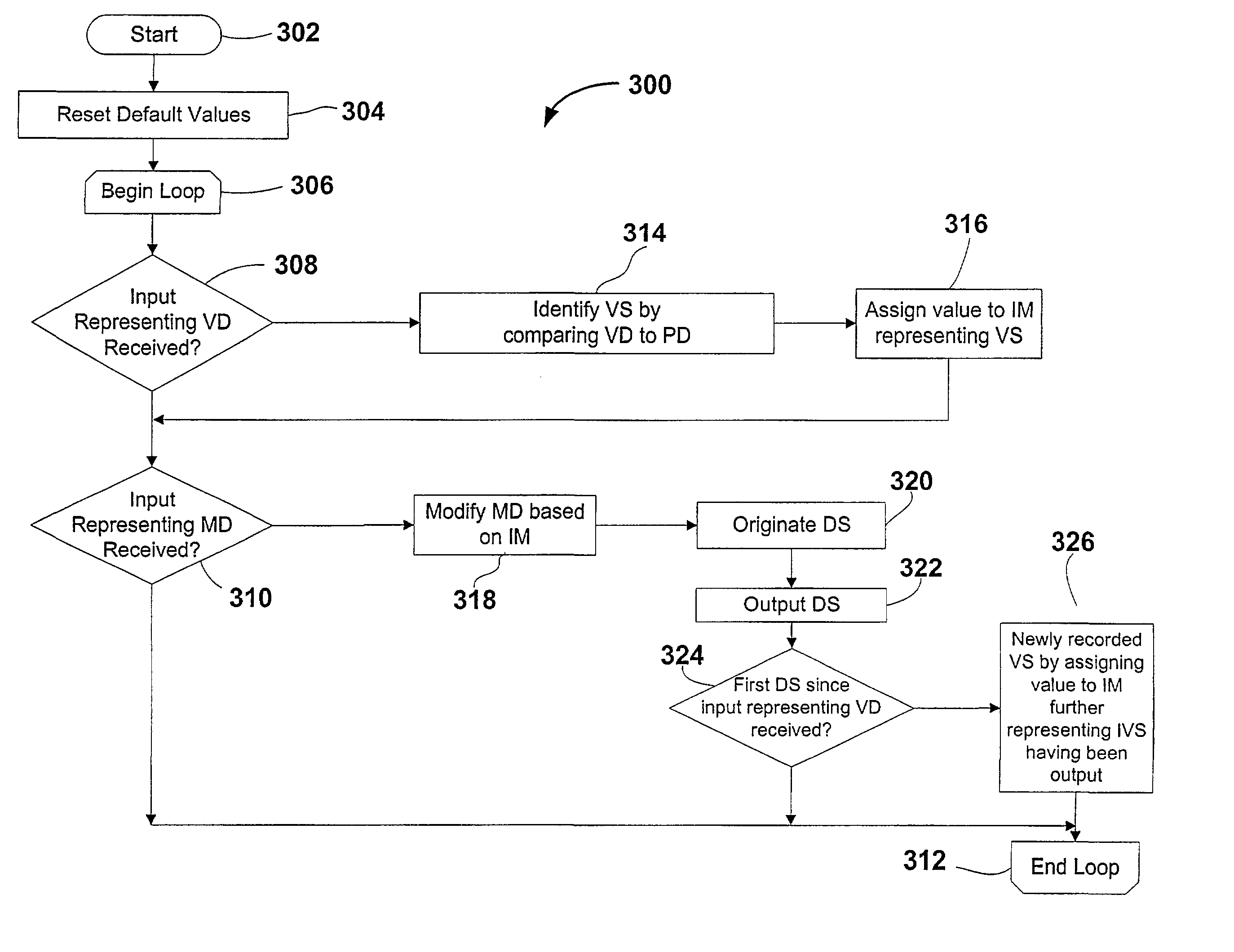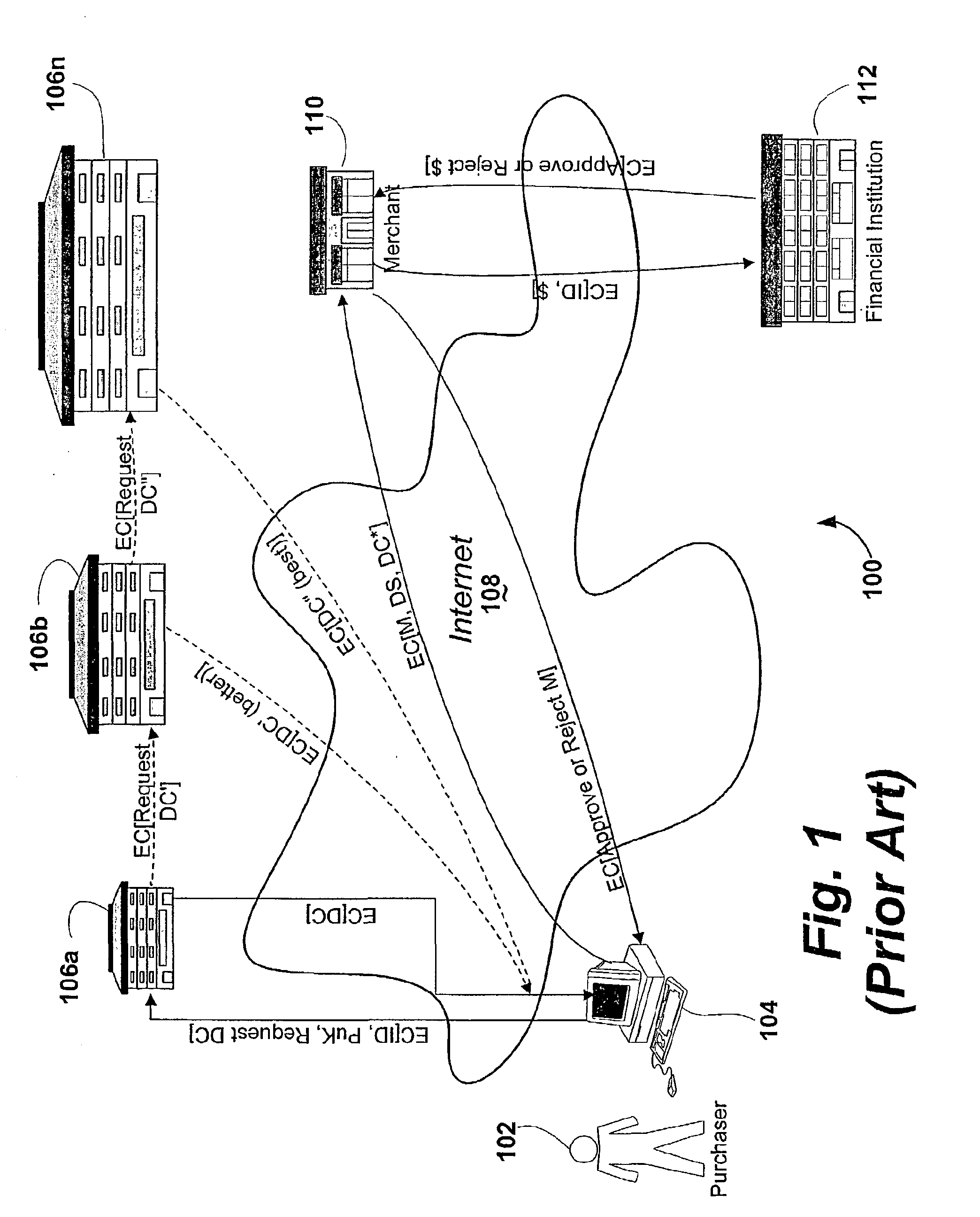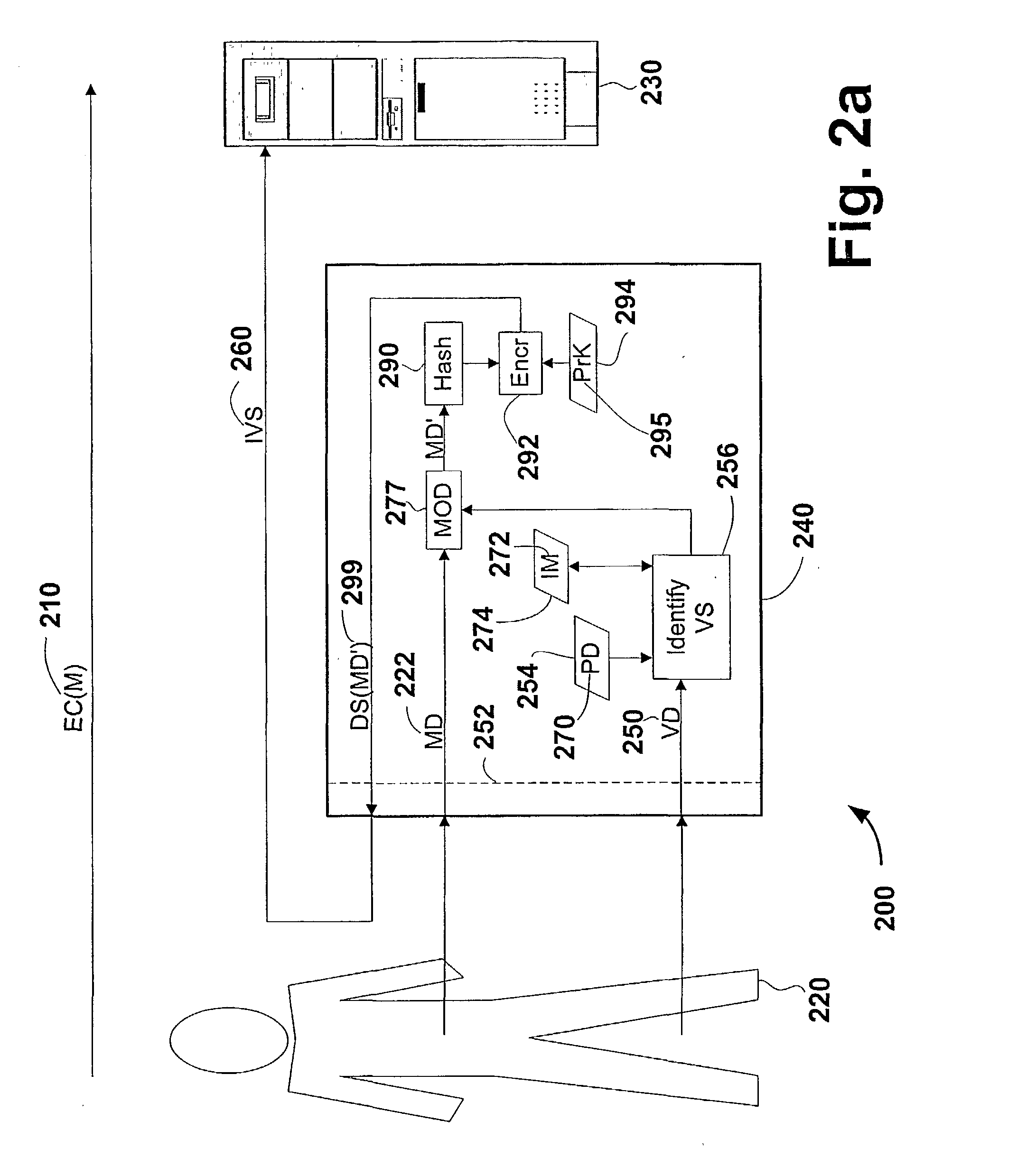It will be appreciated and well known by those having ordinary skill in the art that the trust associated with conventional
authentication systems is relatively weak, in that the
entity identifier utilized for verifying entities today is easily susceptible to misappropriation or forgery.
Further, an account number, account-specific information, and customer-specific information--including biometric values--all are susceptible to discovery (such as during transmission for authentication) and then fraudulent use in later authentications for transactions upon the relevant account.
Once such information is misappropriated, it is difficult for a recipient of an EC to determine that the EC, including an
entity identifier, has been sent fraudulently.
Moreover, because of the
weakness of Entity
Authentication in ECs, business methods and systems including ECs are subject to higher risks and less trust than would otherwise be the case if the Entity
Authentication were stronger.
While the CADS
system enables two parties who otherwise may not have a preexisting relationship with one another to communicate with each other with the confidence of knowing the other's identity, the CADS
system has significant drawbacks.
Furthermore, if a private key is lost or stolen, then the owner of the private key must notify the Certification Authority to revoke the owner's digital
certificate; however, a recipient of an EC with a digital
certificate will only know of the
revocation of the digital
certificate if the recipient cross-references the serial number of the digital certificate against a certificate
revocation list (CRL) published by the Certification Authority.
Another drawback to the CADS
system is that the digital certificate itself is only as good as the particular authority that issues it, and it often is necessary to obtain multiple digital certificates (i.e., from
Certificate Authorities 106a, 106b to 106n) in order to create a sufficient "chain" or "network" of trust between the purchaser 104 and merchant 110 for a transaction or communication to be accepted and acted upon.
In addition to these drawbacks, a fundamental flaw to the CADS system actually providing a trusted
authentication system based upon digital signatures is that a digital certificate only certifies the identity (or other attributes) of the owner of a private key, and falls significantly short of certifying that the private key actually has been used by the legal owner thereof in generating a particular
digital signature.
A fraudulent use of a private key to generate a digital signature of an EC currently cannot be detected through the above-described Message Authentication and Factor A Entity Authentication procedures.
The digital signature system therefore is susceptible to fraud if a private key of a device is stolen, either by discovery of the private key therein and subsequent
copying and use in another device capable of generating digital signatures, or by physical theft of the device containing the private key.
Unfortunately, while the aforementioned security aspects generally reduce overall the risk of fraud within the digital signature system, a recipient of any one particular EC including a digital signature may be unfamiliar with the device used to generate the digital signature and, therefore, be unable to gauge the risk of whether the digital signature was generated fraudulently, either through theft of the device or discovery of the private key.
However, this type of protection by the recipient has significant drawbacks and is not always used by the recipient.
For example, if the Secret or biometric value is communicated to the recipient in association with a message for Sender Authentication by the recipient, then the Secret or biometric value first must have been shared with the recipient beforehand and safeguarded by the recipient as part of an established, preexisting relationship; consequently, a recipient having no prior existing relationship with the sender is unable to perform Sender Authentication.
Another drawback is that the sharing of the Secret or biometric value with the recipient exposes the recipient to liability and exposes the Secret or biometric value itself to a greater risk of theft and
dissemination.
The transmission of the Secret or biometric value for verification carries with it the risk of interception and discovery during transit.
Upon
receipt, the Secret or biometric value must be safeguarded by the recipient, which inherently gives rise to a risk of theft from the recipient.
This is especially significant in the corporate context where a rogue employee may steal the safeguarded Secret or biometric value (insider fraud historically has been the greatest
threat).
The potential damages also are extensive when the Secret or biometric value is stolen.
Since it is difficult for an individual to remember multiple Secrets for multiple recipients, it is common for the same Secret to be used with different recipients.
In the case of the theft of a biometric value, the damages are even more severe, as a sender's biometric characteristic cannot be changed and, once lost, potentially compromises any future Sender Authentication therewith.
A drawback to this alternative paradigm, however, is that because the device remains inoperable until the correct Secret or biometric value of the user is entered, the recipient is unable to monitor repeated attempts to guess the Secret or biometric value.
Under this alternative paradigm, a recipient is unable to determine whether a particular EC sent during such a time period includes a fraudulently generated digital signature, as the device may have been stolen after being enabled but before its deactivation.
Yet another drawback is that this alternative paradigm does not particularly accommodate the use of the device to send ECs. to different recipients when a biometric value is prestored and maintained within--and Factor C Entity Authentication is performed by--the device.
Additionally, a recipient generally is unable to gauge the risk of whether a digital signature was generated fraudulently when no secret or biometric value is shared between the sender and the recipient.
 Login to View More
Login to View More  Login to View More
Login to View More 


